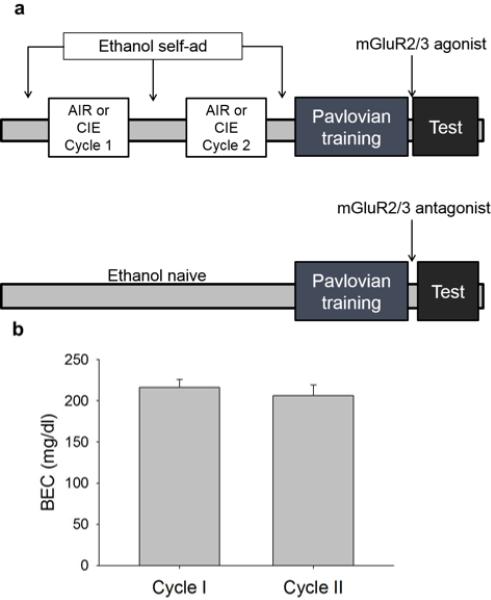Fig. 1.
Time-line of behavioral training and chronic intermittent ethanol exposure (CIE). (a) For experiments in which mice were exposed to CIE, they were trained to self-administer ethanol prior to CIE. After the final self-administration session, mice were trained in a Pavlovian conditioning paradigm to associate a cue (tone) with delivery of a sucrose reinforcer. To investigate whether mGluR2/3 antagonism mimicked the effects of CIE, a cohort of ethanol-naïve mice was trained in a Pavlovian conditioning paradigm. The effect of mGluR2/3 agonism or antagonism on cue-mediated behavior was assessed by administering LY379268 or LY341495, respectively, prior to a test session. (b) Shown is the mean BEC after the end of each cycle of CIE exposure for mice trained in Pavlovian procedures. There was no significant difference in the mean BEC between cycle 1 and 2.

